
Memel
It is a small town in the Free State, half way between Vrede and Newcastle on the R34. The geo-position: 27.6812°S, 29.5636°E and 1734m. Its beginning was some time before the place was officially declared, in 1905 there was a transaction whereby a JJ Muller from Newcastle was transferring one morgen of his farm Ecclefechan to the Nederduits Gereformierte Kerk so that a place of worship can be established. On the topographic map 2729 DA the farm Ecclefechan neighbours the farm Memel to the south. This brings me to the next point, the name. Memel was the name of a farm, it was given by the surveyor, Straszacker, who was from Germany and had some connection to the Memel in East Prussia. Not far from there is also a farm named Danzig, which also was a town on the Baltic close to East Prussia.
At that time a settlement was already developing. At the place where the road between Newcastle and Vrede crossed the Klipriver some businesses had been established. In 1904/05 it was reported that there was a blacksmith and a brick making yard. This was followed by a water driven mill, fed from the river, a general dealer and an agency of the national bank. Also established was a postal agency, a police station, a justice of the peace and a court room was constructed. Interesting is the postal service which was served by a post cart that travelled twice a week between Memel and the Ingogo railway station, urgent messages were sent by pigeons which used the post cart for the return journey.
The town itself came officially into being by a notice in the Orange Free State Official Government Gazette dated 4 September 1914.
The Rebellion
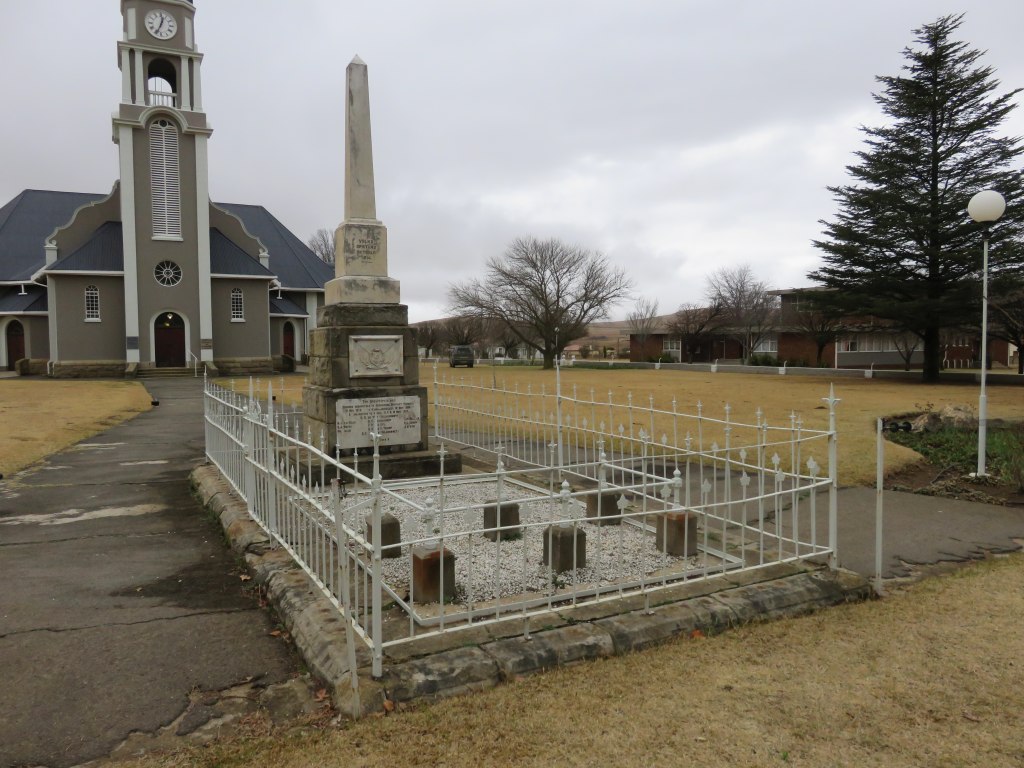 Memel was one of the centres of the rebellion. That was mainly because Christian de Wet, one of the leaders stayed on the farm, Allendale, only 5 miles to the east of the town.
Memel was one of the centres of the rebellion. That was mainly because Christian de Wet, one of the leaders stayed on the farm, Allendale, only 5 miles to the east of the town.
The rebellion was as a reaction by many of the Boers to the Union government declaring war on Germany at the beginning of the 1st world war. It resulted in armed conflict.
A number of commando members from this area were killed in the battles with government forces. This included General de Wet's own son, Danie.
A monument was erected in church yard and the remains of the fallen soldiers reburied there. The inscription, translated, reads as follows: In memory of the citizens who lost their lives at Doornberg, district Winburg 8 Nov 1914 and at Mushroom-valley, 12 Nov 1914. Reburied at Memel, Orange Free State, 8 Nov 1915. D.R.de Wet (Veldcornet), B.C.Badenhorst, J.H.Bester, S.J.Brooks, P.W.van Zyl, P.J.Looch, P.H.Prins, B.W.van D Tromp, J.N.Uys, B.D.Pienaar (Veldcornet). I am not to certain how to translate veldcornet, most likely sergeant.
NG church

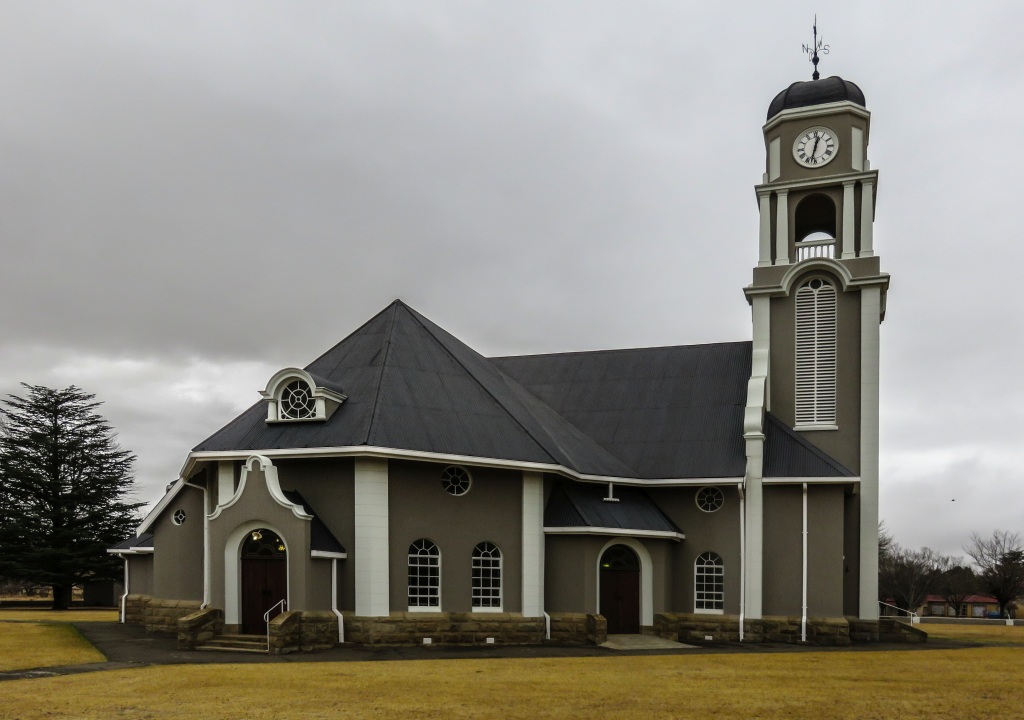 The NG church had an early beginning. The people in the area where Memel was later established were part of the Vrede congregation. With such a large number of church members at the Klipriver settlement a local place of worship had to be established. That was a corrugated iron building erected in 1906/7, see picture. I am not sure where this was situated, most likely near where all the other businesses were established at the crossing of the Klipriver.
The NG church had an early beginning. The people in the area where Memel was later established were part of the Vrede congregation. With such a large number of church members at the Klipriver settlement a local place of worship had to be established. That was a corrugated iron building erected in 1906/7, see picture. I am not sure where this was situated, most likely near where all the other businesses were established at the crossing of the Klipriver.
Soon after the town was proclaimed, the congregation of the NG church was established by ceding from the Vrede congregation.
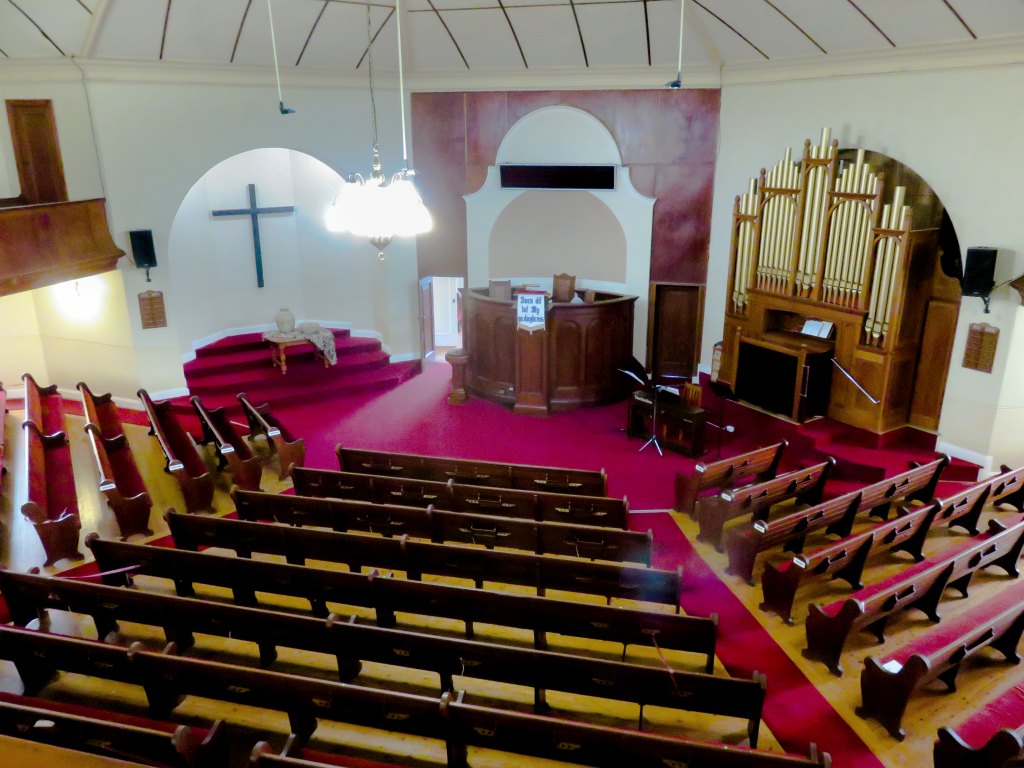 Soon there was a call for a proper church building, but the WW1, the Spanish flue and the economic crisis of 20/21 caused these plans to be delayed. Building work started early in 1925, the cornerstone was laid on 26 October 1925 and the church was completed with the inauguration on 12 November 1926. The architect was Francois Hesse, who was mostly active in the Cape. I know of him as the designer of the NG church in Vredefort.
Soon there was a call for a proper church building, but the WW1, the Spanish flue and the economic crisis of 20/21 caused these plans to be delayed. Building work started early in 1925, the cornerstone was laid on 26 October 1925 and the church was completed with the inauguration on 12 November 1926. The architect was Francois Hesse, who was mostly active in the Cape. I know of him as the designer of the NG church in Vredefort.
One of the major obstacles in the construction was the transporting of the sand stone blocks. The ox wagons had a struggle getting their load through the vlei areas. In fact the first and the second quarries had to be abandoned because of this problem.
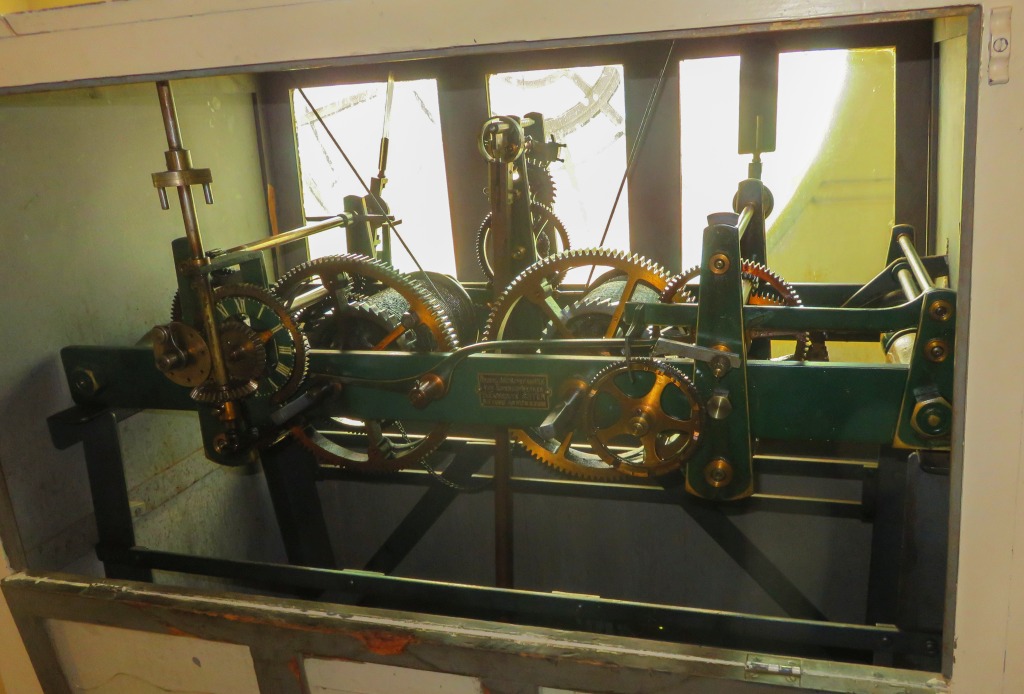 Eventually it all came together and the church was completed. The cost £11175. It is a nice church of very pleasing architecture.
Eventually it all came together and the church was completed. The cost £11175. It is a nice church of very pleasing architecture.
Whenever I visit one of these big churches I make it a point to try and get to the clock works, it's not always possible, with this church I had no Problems. That is just to marvel at these mechanical devices from bygone days. This one was installed as the church was being built. The name plate states that this was put together in 1926 and came from the 'Nederlandsche Fabriek van Torenuurwerken' in Asten.
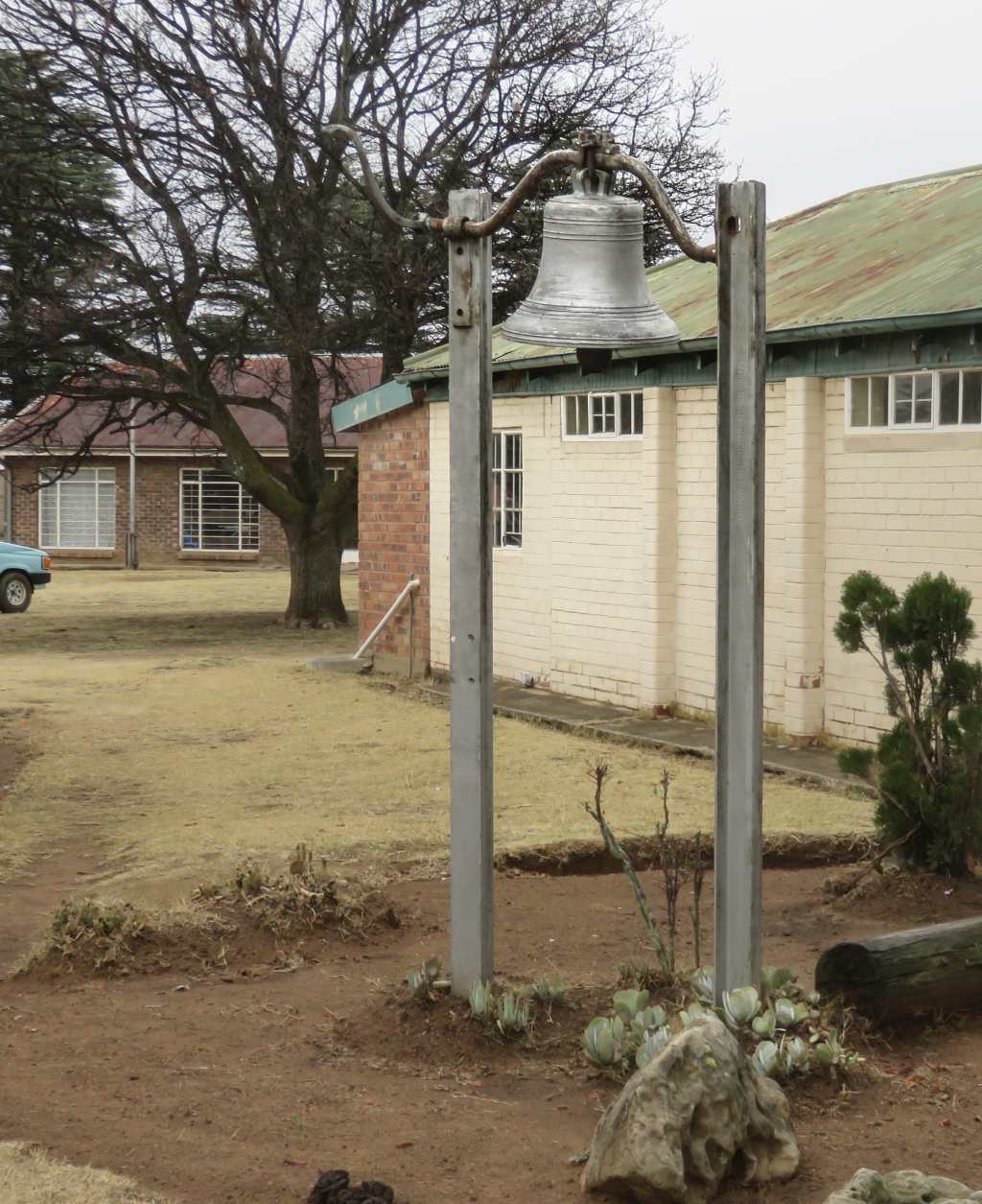 And what happened to the old church building? It was eventually broken down, but the bell was donated to the municipality with the request that it should be rang whenever one from the community is carried to the grave. I am not sure that still happens, it seems to be in a non-ringing state. It's a pity, it's such a nice gesture, sorry, I am getting a bit nostalgic here. When I was a child I remember the church bells ringing when there was a funeral procession going through the village, that was in Germany.
And what happened to the old church building? It was eventually broken down, but the bell was donated to the municipality with the request that it should be rang whenever one from the community is carried to the grave. I am not sure that still happens, it seems to be in a non-ringing state. It's a pity, it's such a nice gesture, sorry, I am getting a bit nostalgic here. When I was a child I remember the church bells ringing when there was a funeral procession going through the village, that was in Germany.
And another very personnel note, I don't like the colour the church has been painted lately. It used to be a nice, beigy yellow pink (sorry, my description of the colour is not very exact), I would call it a happy colour. The grey, I find a bit depressing. But, at the same time the church administration has the right to select which ever colour they prefer, so don't worry about my opinion.
NH church
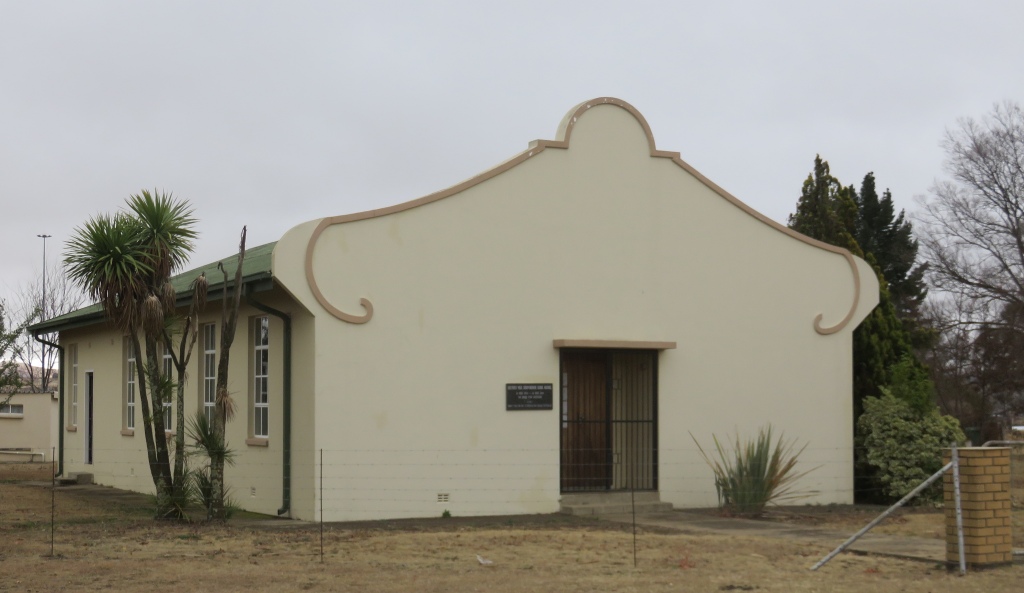
Hotel
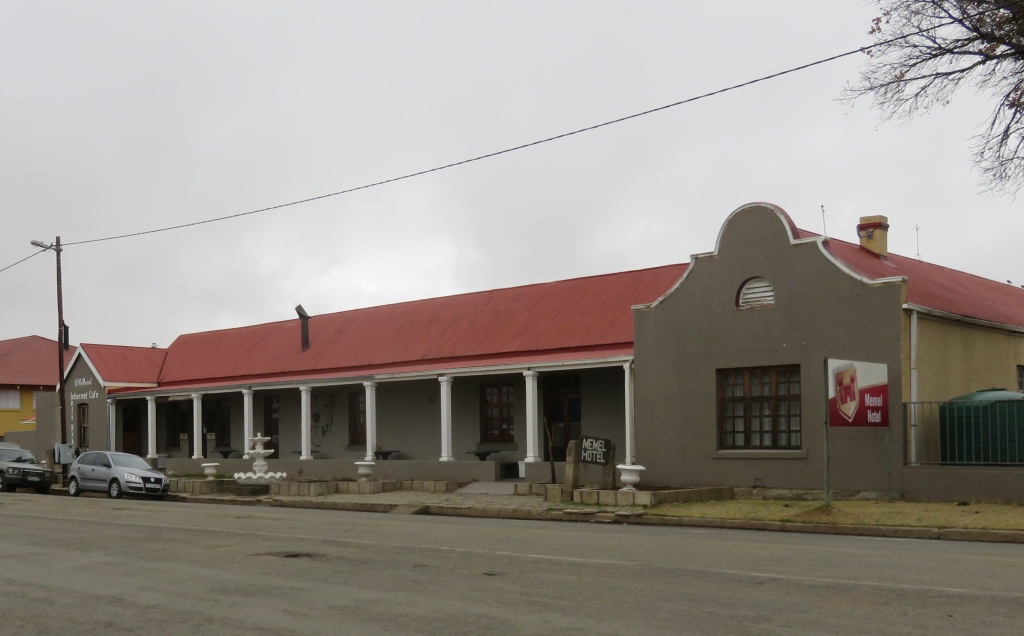
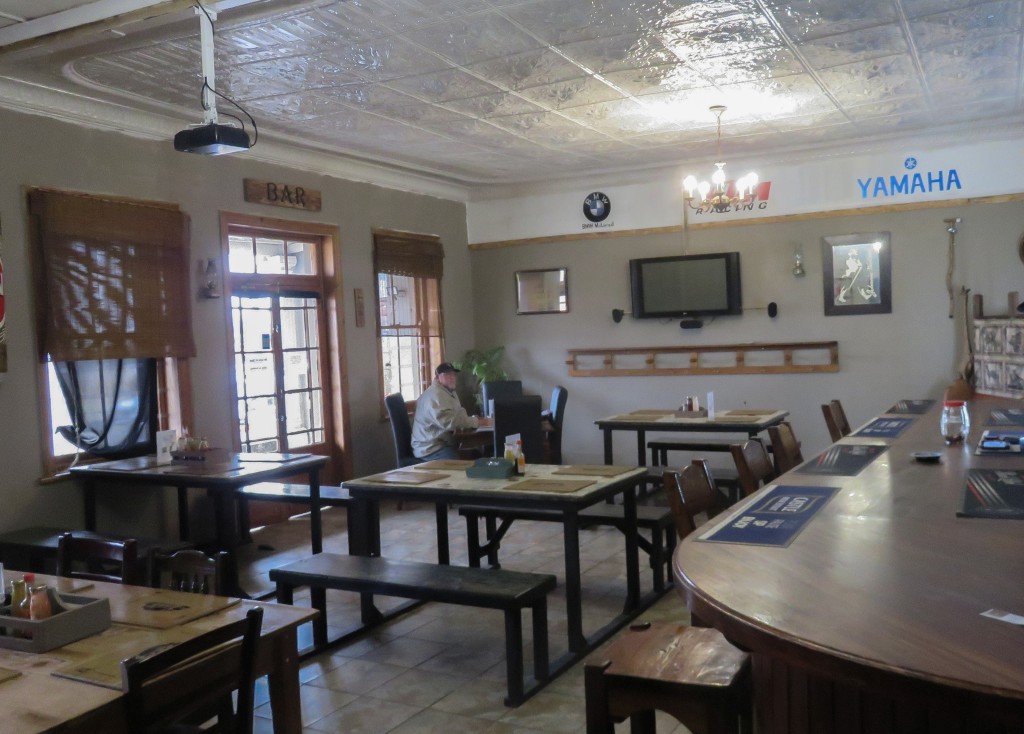 The hotel dates back to the early days of Memel, it was built in 1914.
The hotel dates back to the early days of Memel, it was built in 1914.
Vroue Saal
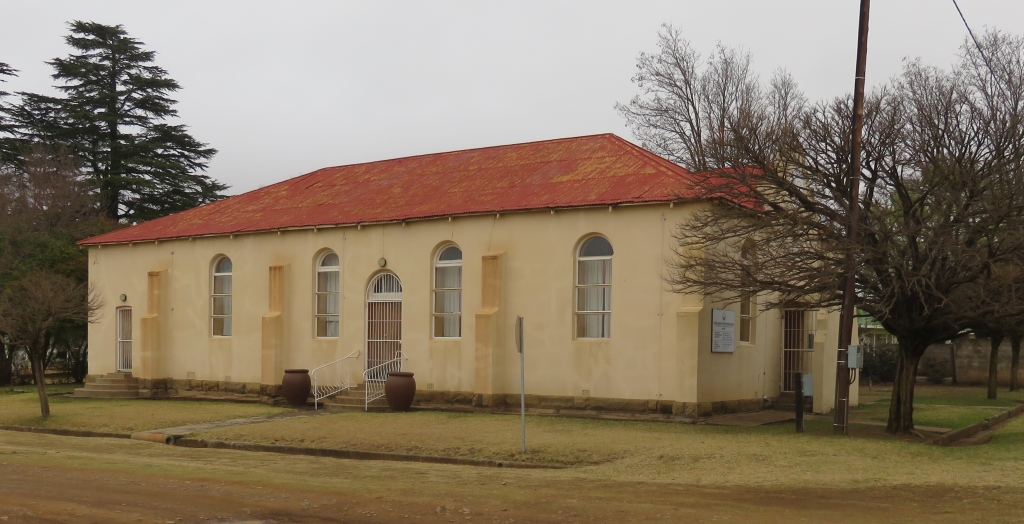 The inscription on the gable states that this is the Oranje Zusters Zaal (Orange Sisters Hall), built in 1918. It was a women’s organisation of the Orange Free State. I still need to do some research on it. The hall is now used by the Afrikaanse Protestantse Kerk, it is an offshoot from the NG Kerk. Members that were not happy with the unification of the NG with the sendings kerk (the missionary arm of the NG) formed this new church.
The inscription on the gable states that this is the Oranje Zusters Zaal (Orange Sisters Hall), built in 1918. It was a women’s organisation of the Orange Free State. I still need to do some research on it. The hall is now used by the Afrikaanse Protestantse Kerk, it is an offshoot from the NG Kerk. Members that were not happy with the unification of the NG with the sendings kerk (the missionary arm of the NG) formed this new church.
School
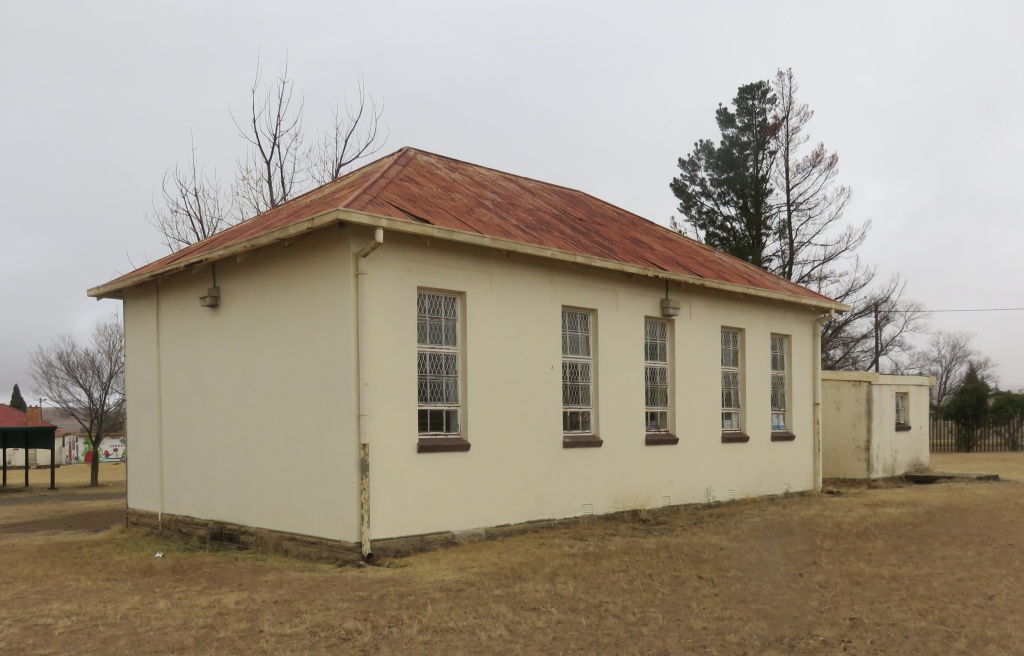 The picture shows the first school building with three class rooms which was built during 1913 and officially opened on the 9 March 1914. The first headmaster was Mr Tromp, he joined the rebellion and died during the battle of Doornberg. His remains were put to rest at the monument at the NG church. The full name as spelt on the plaque is B.W.van D.Tromp.
The picture shows the first school building with three class rooms which was built during 1913 and officially opened on the 9 March 1914. The first headmaster was Mr Tromp, he joined the rebellion and died during the battle of Doornberg. His remains were put to rest at the monument at the NG church. The full name as spelt on the plaque is B.W.van D.Tromp.
The school had to temporarily close, but was reopened in 1915 with only 16 pupils and a new headmaster, Mr.L.J.Le Clus. Numbers increased rapidly once things settled down after the rebellion.
Cemeteries
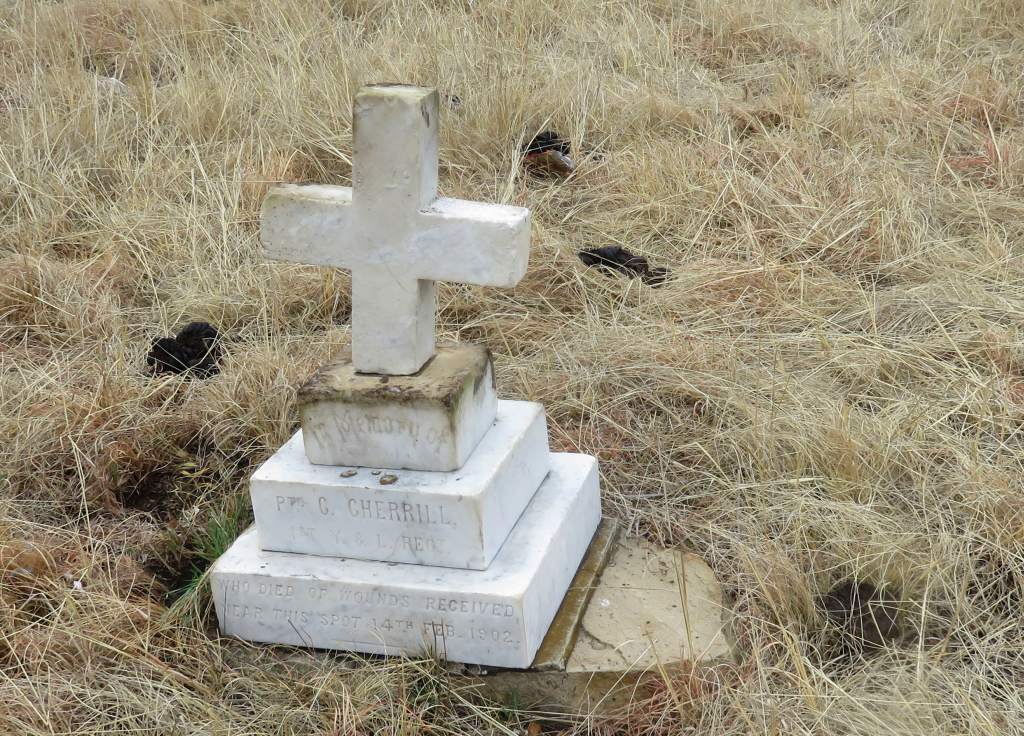 Just out of town to the north-west is a small grave yard with graves dating back to the time before the town was established. There are a number of graves, ut only two with readable grave stones. The first is of Private C.Cherrill of the 1st Y&L Regiment who died of wounds received near this spot 14th Feb 1902, see picture. The other stone reads: Sacret to the memory of James Ernest Francis McAdam, born 18 Sept 1869, died Aug 5.1912, go rest in peace.
Just out of town to the north-west is a small grave yard with graves dating back to the time before the town was established. There are a number of graves, ut only two with readable grave stones. The first is of Private C.Cherrill of the 1st Y&L Regiment who died of wounds received near this spot 14th Feb 1902, see picture. The other stone reads: Sacret to the memory of James Ernest Francis McAdam, born 18 Sept 1869, died Aug 5.1912, go rest in peace.
The other cemetery visited is the presently used cemetery on the south east corner of the town. I did not find anything of specific interest there.
References
Ref 1.: Standard Encyclopedia of Southern Africa, Nasou Limited, 1974
Ref 2.: book title "god met ons 1914 - 1989 NG Kerk Memel"